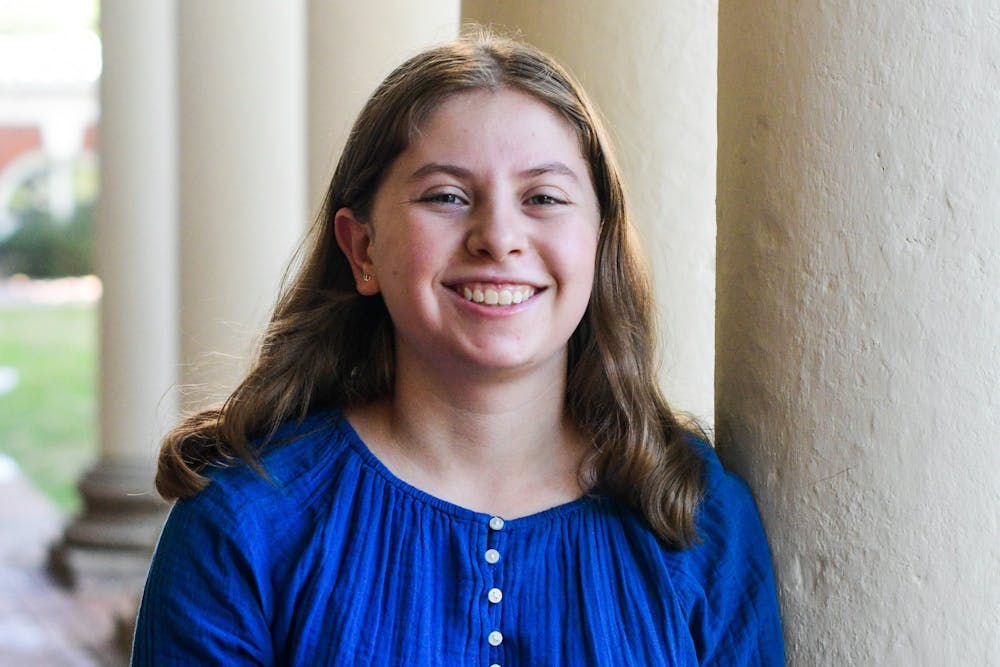Gymnasts. Soccer goalies. Relay swimmers. I’ve marveled at the prowess of these athletes, and many others, over the past two weeks of the 2024 Paris Olympics. After watching four American women — including University swimmer Gretchen Walsh — win gold in the 4x100 medley relay and Mallory Swanson bring the United States to victory in the women’s soccer final, I’ve been thinking about the journey Olympic athletes take to get to their levels of greatness. They’ve dedicated themselves to a sport since they were young, and in doing so, they’ve just about perfected their craft.
Though I’m no Olympian, I wanted the same for myself in my career journey. A few months ago, I was eager to decide on my “sport" — my career — and build a “training regimen,” whether it be graduate education or consulting experiences. I wanted to stick with a plan to maximize my success, just as an Olympic athlete sticks with their sport. There was just one problem — I didn’t feel close to knowing what kind of career I wanted to pursue. What I would learn this summer, however, is that not knowing how my career path will evolve is okay and completely normal, and that living these career experiences — not mapping them — is what really counts.
Over and over again, I faced the dreaded question — “So, what are you going to do after school?” Cue the shudders. I knew I had a passion for combating environmental issues — my civil engineering internship last summer and my classes this year helped me understand that. But I still didn’t know what type of work — that of an engineer, policymaker, lawyer or otherwise — I wanted to undertake in the field. Luckily, I had the perfect avenue to find out this summer as an intern in the Office of Civil Enforcement at the Environmental Protection Agency.
At EPA Headquarters, I witnessed how scientists, engineers and attorneys worked on Clean Water Act enforcement cases together — a unique type of collaboration that brought together professionals from vastly different fields. In between addressing permit compliance and analyzing aerial imagery as an intern, I also initiated one-on-one chats with EPA professionals, conducting informational interviews with people working on policy projects to climate adaptation. It was exciting to see how passionate these professionals are about the projects they lead.
However, even after all of this exposure to invigorating EPA work, I still hadn’t experienced that “a-ha” moment telling me which exact path to pursue. I hadn’t found the equivalent of Simone Biles’ love for tumbling or Katie Ledecky’s power in the pool.
But after taking substantial time to reflect, I realized that I couldn’t compare myself to any Olympian. I came in with a seriously flawed perception of the career search — I had predicated a successful summer on being able to envision my entire career path. I was also trying to see the finish line — that perfect position that I would feel most fulfilled in — when I hadn’t yet stepped onto the track — the career track, that is.
I’ve come to realize that the perfect job doesn’t exist for most people — except, maybe, for an Olympic athlete. The odds of there being one position that brings ultimate success and satisfaction — in terms of work substance, impact, work-life balance, salary, benefits and workplace culture — are close to nil.
I’ve come to accept this reality, that success and satisfaction do not lie solely in one job but rather in accumulated experience and growth. Each individual job has significant value, instilling in you new skills, knowledge and experience — even if you enjoy some jobs more than others. The experience that I gained from working for the federal government this summer — both in the technical work I completed and in the conversations I had — is helping me find the starting line in my career journey, but not the endgame.
I now understand that I don't have to have it all figured out so soon. Unlike an Olympian, who scarcely strays from their sport, it’s impossible for most other professionals to envision an entire career path. Each experience builds upon the last, and new opportunities open up with each career move. It’s like tennis. Each shot you take against an opponent creates room for a variety of different strategies — opting for a serve and volley, going cross-court, barreling a shot down the line or adding some backspin to change the pace of the rally. A career path is a collection of these shots — after the first move, tens of others present themselves.
I’ve also learned that a degree or a job title does not define or restrict the work you can do. At the EPA, an engineer can work on policy and legal matters without having degrees in those fields. You are not confined to one area of the “court” — rather, you can dip your toes into a variety of fields and gain expertise in them on the job.
Your degree and first job out of undergrad are just a launching point for many different opportunities. This understanding reassures me, even now as I’m writing this, that I’m moving in the right direction. Even though I’m not sure where I’ll land, knowing that flexibility exists in the workforce is reassuring.
My summer experience taught me that figuring out what you want to do in a career is not a 100-meter sprint but a marathon. There are different points where you can regroup, reevaluate your strategy and prepare for the next mile. Pace yourself, keep that drive and remember to breathe along the way. Most of all, enjoy the run.
Sam Saks is a Life Columnist for The Cavalier Daily. She can be reached at life@cavalierdaily.com.







